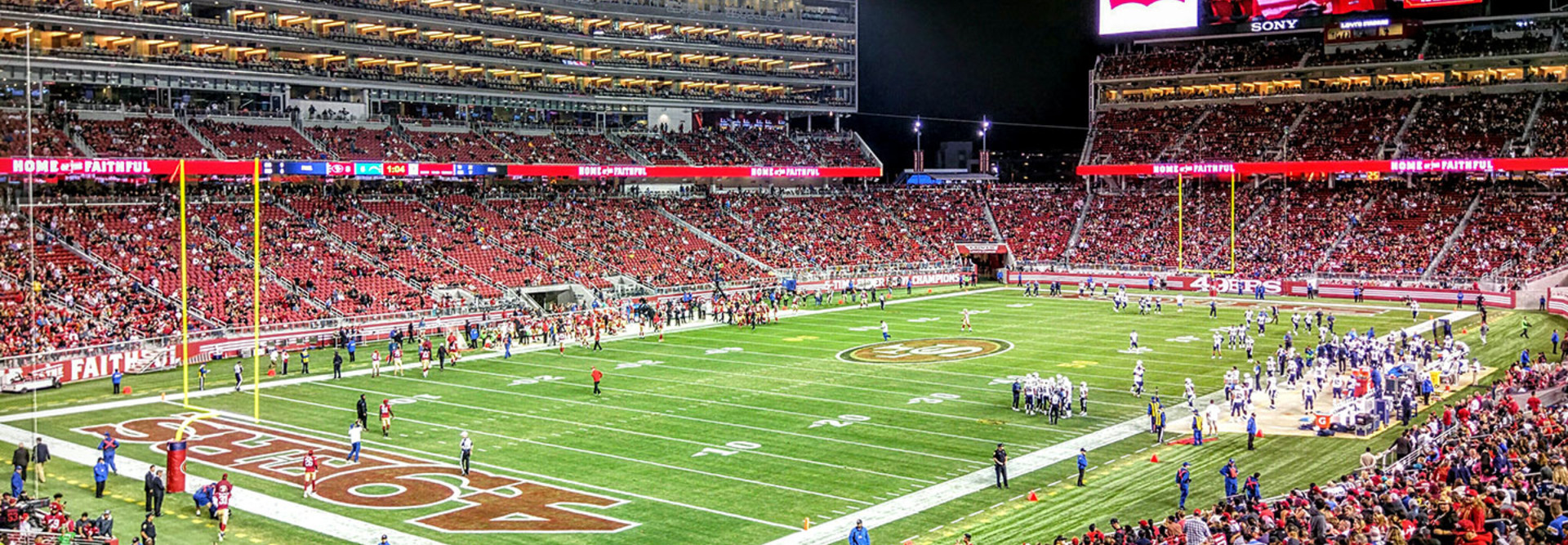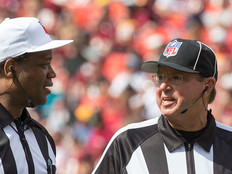Intel Expands FreeD 360-Degree Video Tech for NFL’s 2017 Season
If you’re sitting down to watch the National Football League this Sunday, or any game day for the rest of the season, you’re in for a treat: more 360-degree video options.
Intel has worked with the NFL to more than triple the number of stadiums that now support the chipset giant’s freeD technology, increasing the count from three last season to 11. The technology allows fans to see plays from every angle and experience them as the players do.
The expansion is also an indication that immersive sports technology is catching on, and that the underlying processing power and network connections needed to power and give fans access to those 360-degree replays are up to the task.
Intel, NFL Broaden Their Partnership
Last season the technology was installed in the stadiums of the Baltimore Ravens, Houston Texans and San Francisco 49ers. Intel added eight new NFL teams to its roster of freeD partners, adding one stadium to each division in the AFC and NFC.
These eight teams are the Arizona Cardinals, Carolina Panthers, Cleveland Browns, Indianapolis Colts, Kansas City Chiefs, Minnesota Vikings, New England Patriots and Washington Redskins.
For games at freeD technology–enabled stadiums, fans will be able to access and share the highlights via NFL.com, the NFL Mobile app, the NFL YouTube channel and across the teams’ digital offerings. Fans who are watching the games in person will also experience the enhanced replays in real time on displays at the stadiums.
“By expanding freeD to more teams across the NFL, we’re empowering fans to see every side of the play and relive the excitement of game-changing moments,” James Carwana, general manager of Intel Sports, says in a statement. “During Super Bowl LI, fans experienced a pivotal play from the quarterback’s point of view. Seeing key plays up close and from new perspectives is redefining what it means to watch the game.”
Vishal Shah, senior vice president of digital media at the NFL, says in the statement that the league is “thrilled” to expand the technology to more stadiums. “Partnering with Intel has enabled a new way for fans to experience the excitement of our game,” he says. “The vision of this technology to place the viewer anywhere on the field has the potential to be impactful across multiple areas of the League.”
The Tech Behind Intel’s FreeD Video
Lots of technologies need to come together to make freeD possible. The stadiums are equipped with 38 5K ultrahigh-definition cameras, each with its own processor, to capture plays from every angle and create enhanced 360-degree highlights and immersive player perspectives, Intel notes.
Further, each venue is equipped with servers that can process up to 1 terabyte of data per 15- to 30-second clip. After capturing the data, Intel notes, the volumetric video is fed through miles of fiber-optic cables into a special control room, where an Intel production team virtually recreates the selected clip in 3D from an ideal vantage point or player’s perspective. The goal is to give fans access to angles traditional cameras can’t reach.
“We map millions of voxels — or 3-D pixels,” Preston Phillips, managing director of Intel’s sports group, tells Fortune.
The technicians in the control rooms “can drop a pin anywhere on field of play, on the quarterback’s helmet or wherever, and provide that perspective,” he says.
All of that requires a tremendous amount of processing power at the site, which Intel provides with three freeD “supercomputers” running Intel Core i7 chips, Fortune reports. Fiber-optic cables transmit the data because the amount of information is too large to be transmitted from the stadiums over wireless networks.








